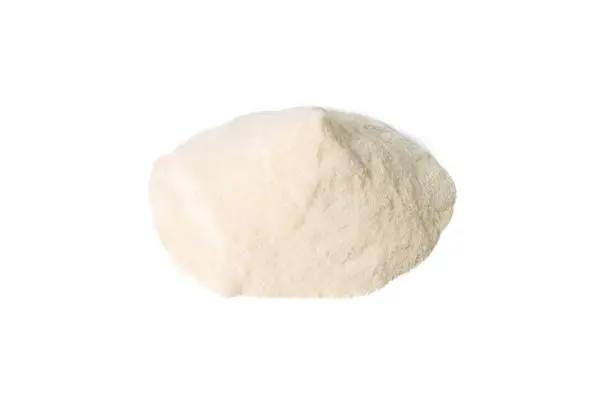Appearance
Milky or Yellowish fine crystalline powders
Common Names
Agar gelose, agar-agar
Packaging
25 kg bags, 25 kg drums
Brief Overview
Agar, also referred to as agar-agar, serves as a gelatinous substance derived from algae, primarily found in the cell walls of red algae and obtainable through boiling extraction. This intricate sulfated polymer consists of sugar galactose subunits extracted from red algae species like Gelidium cartilagineum and Gracilaria confervoides. Agar comprises two primary polysaccharides, namely agarose and agaropectin, with agarose constituting approximately 70% of the total composition. Agarose, a linear polymer, is composed of agarobiose monomers, a disaccharide consisting of D-galactose and 3,6-anhydro-L-galactopyranose. Agaropectin, a heterogeneous mixture of smaller molecules, features alternating units of D-galactose and L-galactose, modified by the addition of acidic side groups such as sulfate and pyruvate. In its unprocessed state, agar is often bundled with thin, membranous, agglutinated strips or occurs in cut, flaked, or granulated forms. The color of agar may range from light yellowish-orange to colorless, presenting a tough consistency when wet and a brittle texture when dry. Powdered agar may exhibit a white to yellowish-white or pale yellow appearance, appearing transparent when observed under a microscope in water. In a chloral hydrate solution, the transparency of powdered agar is even more pronounced than in water.
Manufacturing Process
Agar is extracted from seaweed through a process that includes boiling with hot water, followed by freezing and thawing for purification. Standard commercial extraction methods encompass washing, chemical extraction, filtration, gelation, freezing, bleaching, additional washing, drying, and milling.
Food Industry
Agar serves as a primary thickening and stabilizing agent in the food industry. In various Asian desserts, agar solution is a commonly employed ingredient. This solution functions as a thickener in soups, fruit preservatives, and ice creams. Notably, it can substitute pectin in jams and gelatin in marmalades. Culinary applications include the use of agar solution to clarify sauces and its incorporation into desserts, sweet jellies, puddings, cakes, and fruit salads. With approximately 80% fiber content, agar solution can also act as an intestinal regulator.
Research Industry
Within laboratory settings, agar is a frequently utilized component in growth mediums, combined with other nutrients, for the cultivation of bacteria and fungi. Additionally, it serves as a gelating agent for plant cell culture in research applications.
